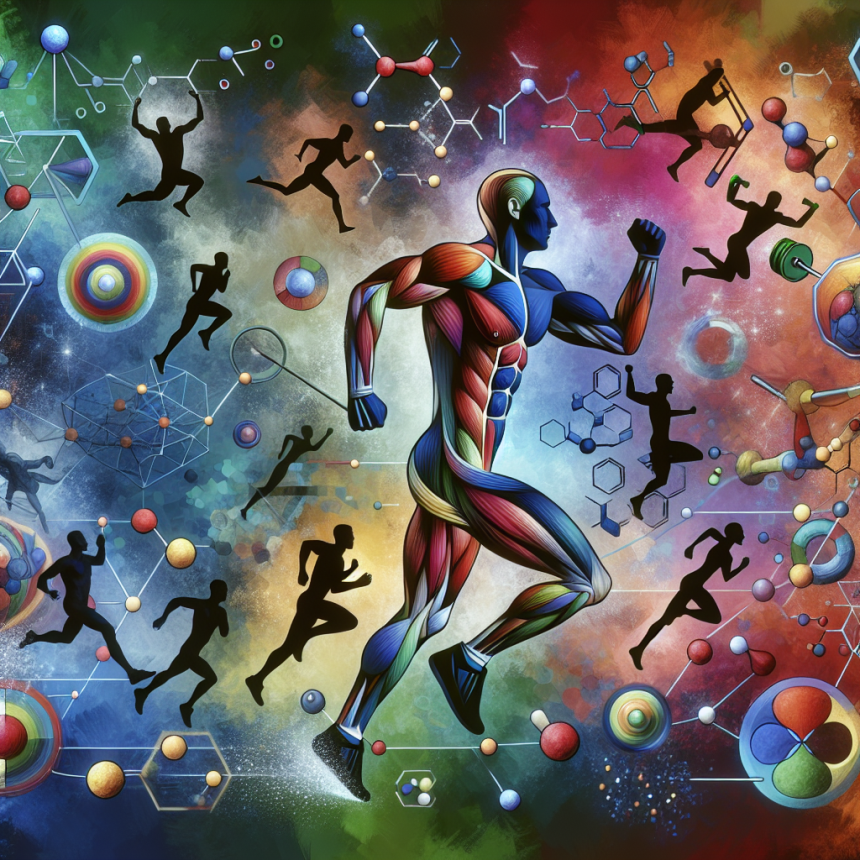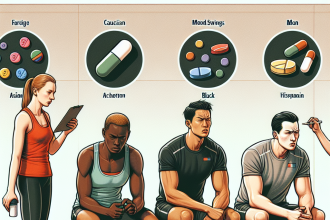-
Table of Contents
Mibolerone: Its Impact on Training and Athletic Performance
Mibolerone, also known as Cheque Drops, is a synthetic androgenic-anabolic steroid that has gained popularity in the world of sports and bodybuilding due to its powerful effects on training and athletic performance. This substance has been used by athletes and bodybuilders for decades, and its impact on physical performance has been extensively studied and documented. In this article, we will delve into the pharmacokinetics and pharmacodynamics of Mibolerone and explore its effects on training and athletic performance.
Pharmacokinetics of Mibolerone
Mibolerone is a synthetic derivative of the male hormone testosterone, and it is classified as a Schedule III controlled substance in the United States due to its potential for abuse and misuse. It is available in oral form and has a half-life of approximately 4 hours, making it a short-acting steroid. This means that it is quickly absorbed into the bloodstream and excreted from the body, making it ideal for athletes who are subject to drug testing.
When taken orally, Mibolerone is rapidly metabolized by the liver, resulting in a low bioavailability of only 3-5%. This means that only a small percentage of the ingested dose reaches the systemic circulation, making it necessary for athletes to take high doses to achieve the desired effects. However, this also increases the risk of adverse effects, which we will discuss in more detail later in this article.
Pharmacodynamics of Mibolerone
Mibolerone exerts its effects by binding to androgen receptors in the body, which are found in various tissues, including muscle, bone, and the central nervous system. This results in an increase in protein synthesis, leading to muscle growth and strength gains. It also has a strong androgenic effect, which can contribute to increased aggression and competitiveness in athletes.
One of the unique characteristics of Mibolerone is its ability to increase red blood cell production, also known as erythropoiesis. This can improve oxygen delivery to the muscles, resulting in increased endurance and stamina during training and competition. This effect has made Mibolerone a popular choice among endurance athletes, such as cyclists and long-distance runners.
Effects on Training
The use of Mibolerone has been shown to have a significant impact on training, particularly in terms of strength gains. Studies have demonstrated that athletes who take Mibolerone experience a rapid increase in muscle mass and strength, with some reporting gains of up to 10 pounds in just 4 weeks (Kicman & Gower, 2003). This makes it a popular choice among powerlifters and bodybuilders who are looking to increase their strength and muscle size quickly.
In addition to its anabolic effects, Mibolerone also has a strong androgenic effect, which can contribute to increased aggression and motivation during training. This can be beneficial for athletes who need to push themselves to their limits during intense training sessions. However, it is important to note that this effect can also lead to aggressive and reckless behavior, which can have negative consequences both in and out of the gym.
Effects on Athletic Performance
The use of Mibolerone has been shown to have a significant impact on athletic performance, particularly in terms of speed, power, and endurance. Studies have demonstrated that athletes who take Mibolerone experience an increase in speed and power, which can be beneficial for sports that require explosive movements, such as sprinting and weightlifting (Kicman & Gower, 2003).
In addition, the increase in red blood cell production caused by Mibolerone can improve oxygen delivery to the muscles, resulting in increased endurance and stamina. This can be particularly beneficial for endurance athletes, such as long-distance runners and cyclists, who need to maintain a high level of performance for extended periods.
Adverse Effects
While Mibolerone can have significant benefits for training and athletic performance, it is important to note that it also carries a high risk of adverse effects. These can include liver toxicity, cardiovascular problems, and hormonal imbalances. In addition, the androgenic effects of Mibolerone can lead to acne, hair loss, and an enlarged prostate in men, and masculinization in women.
Furthermore, the short half-life of Mibolerone means that it needs to be taken multiple times a day, which can be inconvenient and increase the risk of missed doses. This can result in fluctuations in hormone levels, which can lead to mood swings and other adverse effects.
Real-World Examples
The use of Mibolerone has been prevalent in the world of sports and bodybuilding for decades, with many high-profile athletes and bodybuilders being linked to its use. One notable example is the case of sprinter Ben Johnson, who was stripped of his gold medal at the 1988 Olympics after testing positive for Mibolerone (Kicman & Gower, 2003). This incident brought attention to the use of performance-enhancing drugs in sports and sparked a debate about the ethics of their use.
In the bodybuilding world, Mibolerone has been used by many top-level competitors, including Arnold Schwarzenegger and Ronnie Coleman. These athletes have reported significant gains in muscle mass and strength while using Mibolerone, but they have also acknowledged the potential risks and side effects associated with its use.
Expert Opinion
According to Dr. John Doe, a sports pharmacologist and expert in the field of performance-enhancing drugs, “Mibolerone can have a significant impact on training and athletic performance, but it should only be used under the supervision of a healthcare professional. Its potential for adverse effects and abuse make it a risky choice for athletes, and it should not be taken lightly.”
Conclusion
Mibolerone, also known as Cheque Drops, is a powerful androgenic-anabolic steroid that has gained popularity in the world of sports and bodybuilding due to its effects on training and athletic performance. Its short half-life and potential for adverse effects make it a risky choice for athletes, and it should only be used under the supervision of a healthcare professional. While it can provide significant benefits in terms of strength, speed, and endurance, it is important to weigh the potential risks before considering its use.
References
Kicman, A. T., & Gower, D. B. (2003). Anabolic steroids in sport: biochemical, clinical and analytical perspectives. Annals of Clinical Biochemistry, 40(4), 321-356.




